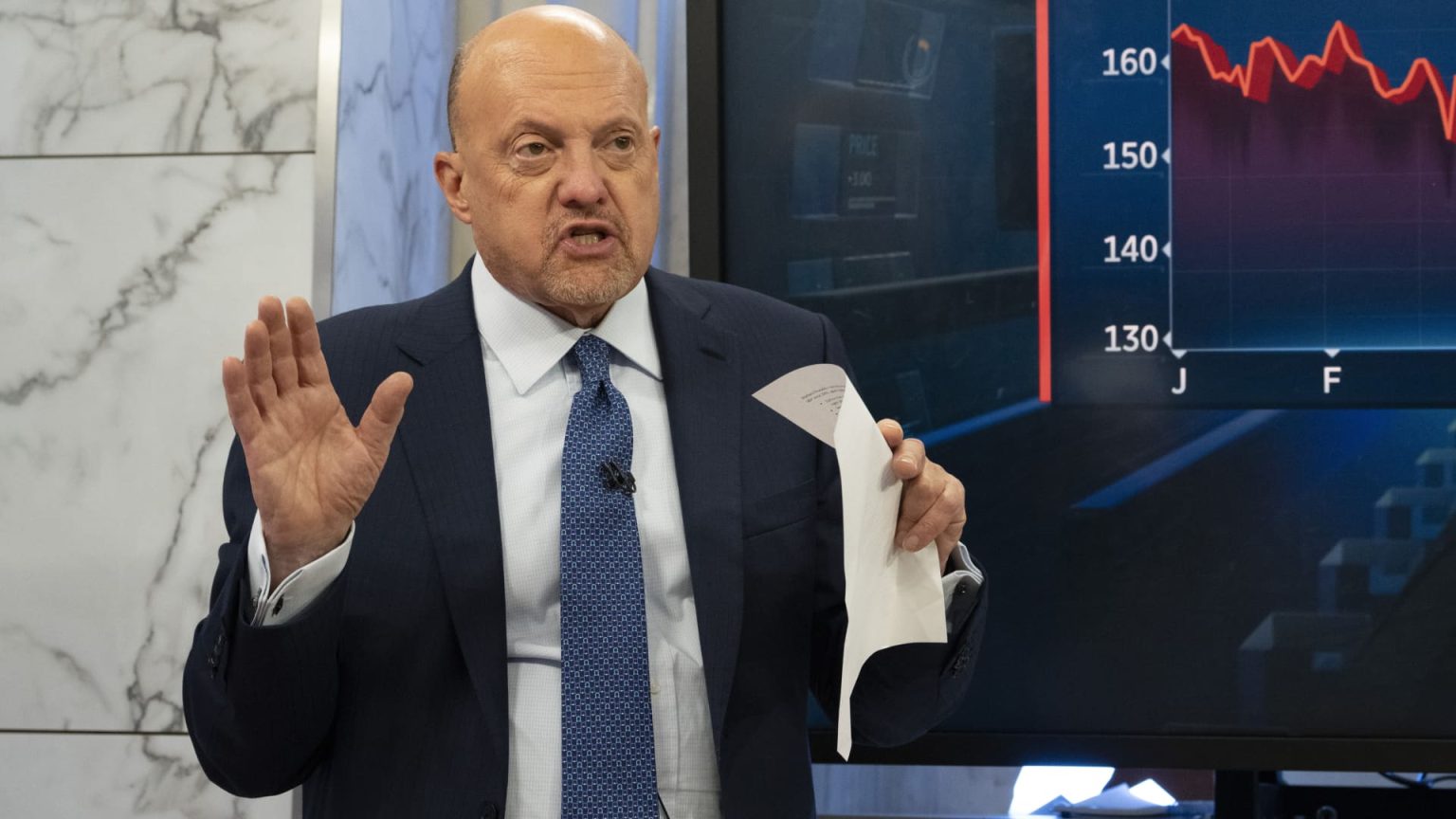Here’s our Club Mailbag email investingclubmailbag@cnbc.com — so you send your questions directly to Jim Cramer and his team of analysts. We can’t offer personal investing advice. We will only consider more general questions about the investment process or stocks in the portfolio or related industries. This week’s question: Can you go into “buy to open,” “buy to close,” sell to open,” and “sell to close” for options trades? — Dave M. Great question and follow-up to our introduction to options . For starters, “open” is used to initiate a position. You are opening a position. “Close” is used to exit an existing position. You are closing out the trade. “Buying” an options contract means you have the right but not the obligation to take action. “Selling” the contract means to take the short side of the trade. Buy to open: Let’s assume I want to get some exposure to Apple via the options market. If I believe the price of Apple will go up, I would buy to open a call option. This means I pay for the right, but not the obligation, to call on Apple shares — from the call option seller — should they appreciate. If I believe the price of Apple will fall, I would buy to open a put option, which means I pay for the right, but not the obligation, to sell Apple shares — to the put option seller — should they decline in value. Sell to close: Now let’s say I’m ready to book profits on that Apple bet. I don’t have to take delivery of the shares or wait til the contract expires. I can always sell the contract for cash by closing out the position. I would sell to close that contract. If I sell to close a call option, it means I’m booking a profit on Apple stock after it has gone up. If I sell to close a put option, I’m booking a profit on Apple shares after they’ve declined. Sell to open: Selling a call or put option is all about making money upfront with the hope that the contract will expire worthless (it doesn’t hit its strike price). If I sell to open a call option on Apple, I’m selling the contract for a premium, and if shares run higher I’m on the hook to sell them to you at the agreed-upon price — even if I have to go out and buy them at a higher price. If I sell to open a put option, I collect the premium, but if shares go down to the agreed-upon price, I have to cover your losses. Selling a put option is like selling insurance on a home: if the home doesn’t take any damage by the time the insurance expires, I keep the premium. However, if the house does get damaged I’ve agreed to cover your losses beyond a certain point (the strike price). Buy to close: If I subsequently want to close out the trade above — shares declined and I want to book the gain on a call option (because call options are worth less if shares decline) before the contract expires, or shares advanced and I want to book profits on the put option (which is worth less when shares appreciate) — I would buy to close the contract. I am buying back the contract I sold, at a lower price than what I sold it for, to close out the trade. I was short, and now I am taking a long position to cancel out my exposure. In the case of a spread strategy, such as those listed in our prior alert , we are simultaneously going long on one contract and short on another contract at a different price. In this case, I would “buy to open” the contract I wish to go long on, and simultaneously “sell to open” the contract I wish to go short on. In both cases, I have opened up new exposures (both are “opening” trades) but I’m long the contract I bought and short the one I sold. To exit this trade, I would do the reverse. I will sell to close the contract I bought to open and buy to close the contract I sold to open (both trades are “to close”). The idea is to simply cancel out my exposure on each contract. I am selling what I previously bought and closing out the first leg while at the same time buying back what I previously sold to close out the second leg of the trade. Finally, I feel the need to reiterate something from the original piece for those interested in trying their hands at options. Options are just a tool and must be fully understood before implementation as their risk/reward profile is completely different from that of equities. To be successful with equities, you just need to determine if the stock will go up, buy, and wait. With options, you need to get the direction, timing, and magnitude of the move right as missing any one of these variables can result in losses. These tools are not appropriate for everyone. The most important thing: Don’t get caught up in the hype of more exotic instruments without fully understanding the risks. (See here for a full list of the stocks INJim Cramer’s Charitable Trust.) As a subscriber to the CNBC Investing Club with Jim Cramer, you will receive a trade alert before Jim makes a trade. Jim waits 45 minutes after sending a trade alert before buying or selling a stock in his charitable trust’s portfolio. If Jim has talked about a stock on CNBC TV, he waits 72 hours after issuing the trade alert before executing the trade. THE ABOVE INVESTING CLUB INFORMATION IS SUBJECT TO OUR TERMS AND CONDITIONS AND PRIVACY POLICY , TOGETHER WITH OUR DISCLAIMER . NO FIDUCIARY OBLIGATION OR DUTY EXISTS, OR IS CREATED, BY VIRTUE OF YOUR RECEIPT OF ANY INFORMATION PROVIDED IN CONNECTION WITH THE INVESTING CLUB. NO SPECIFIC OUTCOME OR PROFIT IS GUARANTEED.
Here’s our Club Mailbag email investingclubmailbag@cnbc.com — so you send your questions directly to Jim Cramer and his team of analysts. We can’t offer personal investing advice. We will only consider more general questions about the investment process or stocks in the portfolio or related industries.
This week’s question: Can you go into “buy to open,” “buy to close,” sell to open,” and “sell to close” for options trades? — Dave M.
Read the full article here















